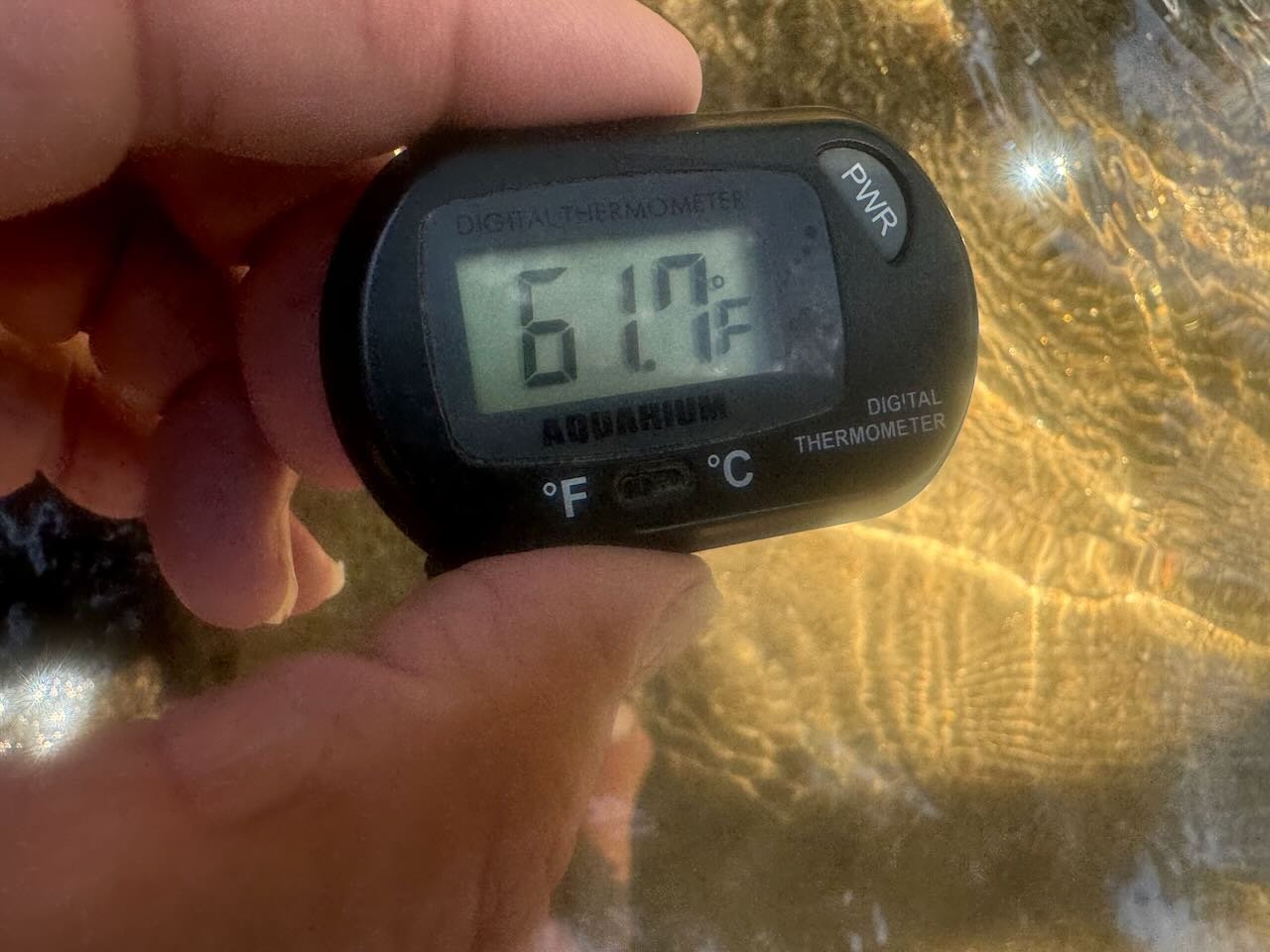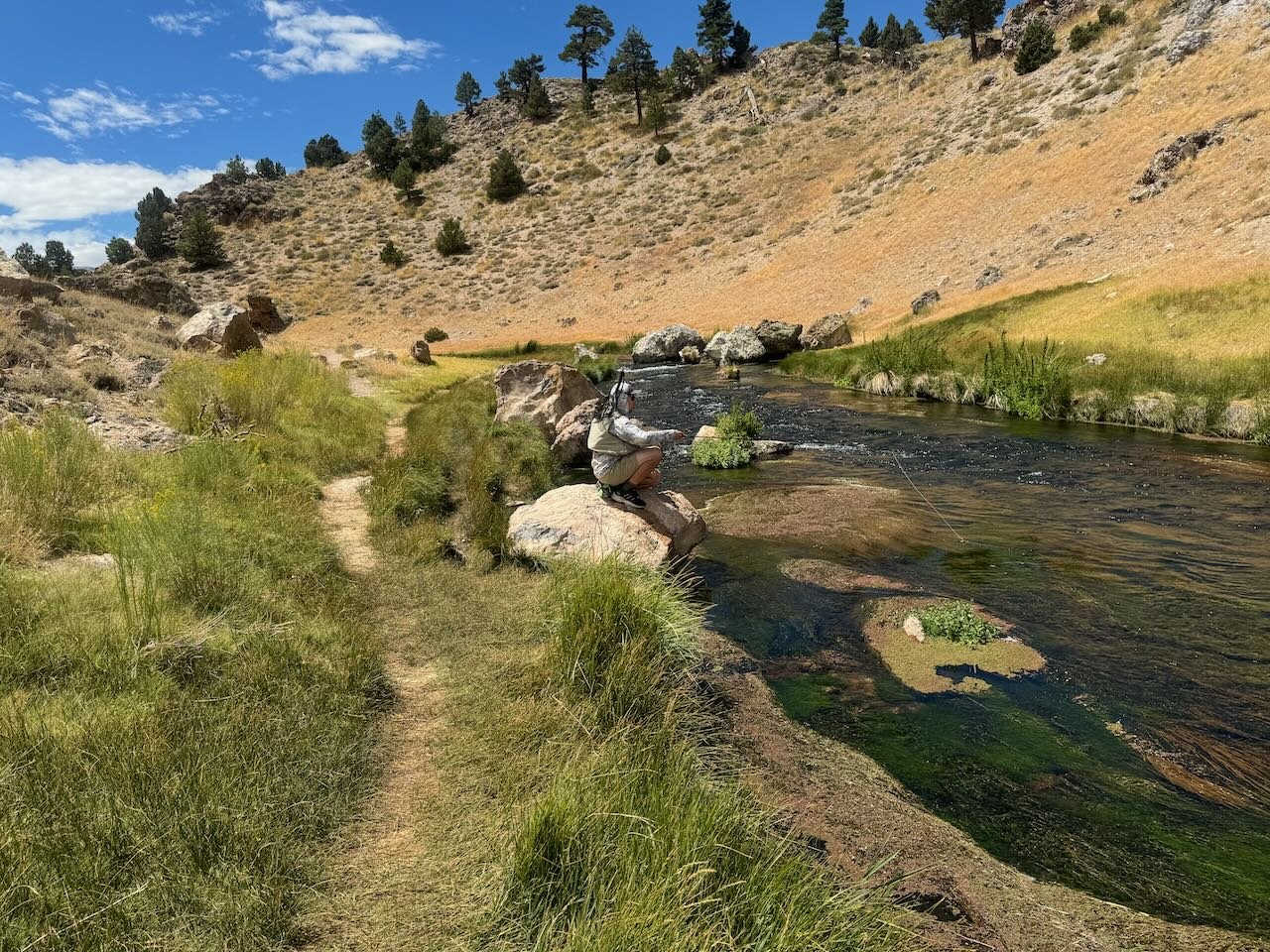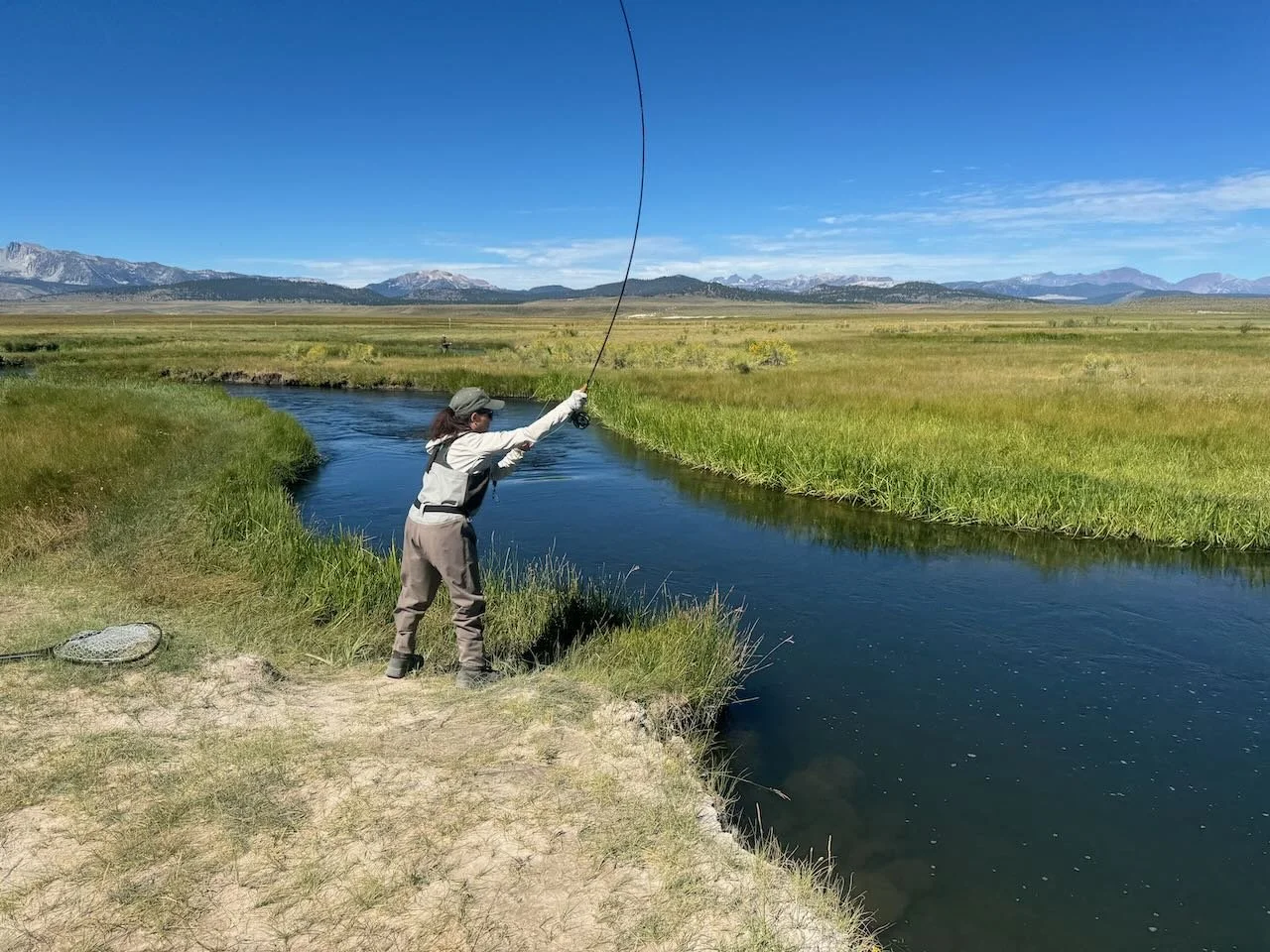The summer doldrums are hitting the Eastern Sierra. Middle of the day fly fishing is tough on waters that are warming up towards that 70 degree mark and has little or no insect activity. Best fly fishing is in the morning when the insects are active and the water is in the mid 60’s or less. If the stream temperatures in the afternoons is in the mid-60’s or less try fly fishing with hoppers. Most of the hoppers I’m seeing on the water are small like sizes 12 or 14. Tan bodied stimulators, tan parachute hoppers and tan bodied Dave’s hoppers are the hopper patterns that are producing trout. Fly fishers need to implement volunteer Hoot Owl restrictions. Owls are most often seen or heard by fly fishers early or late in the day. This is the time fly fishers should be on the water fly fishing. When water temperatures are 68 to 70 trout need to be released quickly. No pictures of trout out of the water, no stomach samples and land them as quick as possible. At 70 degrees and higher the mortality rate of catch and release trout increases greatly. No catch and release fly fishing when the water temperatures are at 70 degrees or higher. Hatches of caddis, mayflies and midges are what is creating the feeding activity of the trout.
During the summer months fly fishers need to check the water temperatures of the waters they fish so they can stop fly fishing when water temperatures reach 70 degrees or higher.
Hot Creek
Interpretive Site:
No hatches makes it tough to get the trout to come to the surface. Look for trico hatches early in the morning. After that try fishing with flies that will bring trout to the surface like size 12 tan stimulators, size 12 Chernobyl ants, size 14 mini chubby Chernobyl’s and size 12 tan bodied parachutes hoppers. Try fly fishing late evening for the caddis activity with size 20 gray elk hair caddis, size 20 gray parachute caddis and size 20 gray X-caddis.
Working nymphs in the pools is one place you can use nymphs without getting hooked up in the weed beds.
Hot Creek
Canyon Section:
Middle of the day is tough fly fishing with no aquatic insect activity and the full growth of weed beds making nymphing next to impossible. You can try a dry and dropper in the deeper holes in the canyon section if you don’t mind snagging the nymphs on the weeds. Work tricos in the morning if there is a hatch. Working small gray caddis like X-caddis, parachute caddis and elk hair caddis along the banks where the trout are hanging out will produce a few trout. Offering the trout a bigger calorie meal will bring a few trout to the surface. Hopper imitations like mini Chernobyl’s, tan stimulators and tan parachute hoppers. For nymphs use olive quilldigons, hot spot pheasant tail nymphs, bead head flash back pheasant tail nymphs and SOS nymphs.
Crooked Creek arm of Crowley Lake is a good afternoon spot to fly fish when the rest of the lake is blown out from the afternoon winds.
Crowley Lake
Mouth of McGee:
Surface water temperatures are in the low 70’s by noon. Fishing should be done in the mornings before the water temperatures get too high for good catch and release mortality rates. Fly fishers from water craft are targeting the trout in the McGee inlet area. Midging with tiger midges, zebra midges, gray midges and albino Midges in 10 to 15 feet of water are producing trout. Fly fishers working damsel fly nymphs, callibaetis nymphs and perch fry imitations around the weed beds are producing trophy trout that are looking for opportunistic opportunities for a large morsel of food.
Euro nymphing the river is a great way to present your nymphs to the fish feeding on the substrate.
Upper Owens River
Above Benton Crossing Bridge:
The hoppers on the upper Owens River are small size 12 or 14 and not very abundant. Throwing a hopper patterns like a parachute hopper, tan stimulator or Dave’s hopper will bring trout to the surface particularly in the afternoon winds. There are hatches in the morning and mid-afternoon. Fly fishing with dries like size 16 elk hair caddis size 18 Adams parachute, and size 18 blue wing olive parachutes is fooling the surface feeding rainbows and browns. Nymphing continues to be productive throughout the day. Size 18 olive quilldigons, size 18 bead head flash back pheasant tail nymphs, size 16 bead head flash back gold ribbed hare’s ears and size 16 SOS nymphs are imitating the nymphs the trout are feeding on. Water temperatures need to be monitored, but so far they have not reached beyond 65 degrees. Fishing downstream with streamers like black wooly buggers, black matukas and black and white marabou muddlers are fooling trout in the deeper holes.
Fly fishing the soft edges next to the fast water sections of Rock Creek is producing wild brown trout up to 12 inches with a dry and dropper rig.
Rock Creek:
Opportunistic free stone creeks like Rock Creek are great waters to fish middle of the day when other waters are too hot to fish. Reduced flows are allowing fly fishers to work the pools and runs where wild brown trout are holding and feeding on dries and nymphs. This is prime dry and dropper water. Use a size 16 elk hair caddis, Adams parachute or royal Wulff on the surface. Using you favorite dry fly that you have confidence in will be the best pattern you can fish on waters with opportunistically feeding trout. For the nymphs use a size 16 bead head flash back gold ribbed hare’s ear, size 16 Prince nymph or a size 16 tiger midge.
Evenings are still a great time to ply the waters of Bishop Creek Canal with the fly rod.
Bishop Creek Canal
Behind Bishop Veterinary Hospital:
Day time temperatures are cooling a bit in the Owens Valley allowing fly fishers to throw hoppers and nymphs in Bishop Creek Canal during the day. A good way to fly fish the canal is with a dry and dropper rig. A hopper and dropper is a specific dry and dropper rig. Throw a size 12 tan Morrish hopper, Dave’s hopper or parachute hopper with a three foot 5X fluorocarbon tippet tied to the bend of the hopper pattern. For the nymphs fish with a size 16 SOS nymph, size 18 bead head flash back pheasant tail nymph, size 16 bead head flash back gold ribbed hare’s ear.






